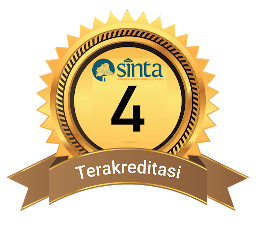Analysis of The Implementation of Chemistry Learning in The Use of Digital Media Post-Pandemic Covid-19 at SMAN 2 Mataram
DOI:
10.29303/cep.v7i2.6638Published:
2024-12-04Issue:
Vol. 7 No. 2 (2024): Edisi NovemberKeywords:
learning implementation, digital media, post the covid 19 pandemicArticles
Downloads
How to Cite
Abstract
This research aims to determine the implementation of chemistry learning in the use of digital media and to find out the obstacles to implementing chemistry learning in the use of digital media after the Covid-19 pandemic at SMA Negeri 2 Mataram. The approach used by researchers is a descriptive qualitative approach, determining informants using a non-probability sampling technique, namely purposive sampling. The percentage of implementation of chemistry learning using digital media at SMAN 2 Mataram has been carried out well, reaching 80%, the results of the questionnaire used the Likert scale calculation method. Chemistry learning uses digital media which is carried out by teachers using WPS Office Power Point media (Microsoft Word and Microsoft Power Point) and LCD. Meanwhile, students actively utilize digital learning platforms, namely accessing learning videos from YouTube, looking for material references through Ruang Guru, and actively discussing via WhatsApp groups. An obstacle in the chemistry learning process using digital media for teachers at SMAN 2 Mataram is the lack of teacher mastery in the development and use of digital media. Meanwhile, the obstacle for students in using digital media in learning is the limited internet connection for students at school.
References
Andre Indrawan. (2021). Pengaruh terpaan tayangan youtube ruang guru sebagai media informasi dalam meningkatkan aktivitas belajar siswa SMP Kamandaka Bogor. 6, 37–46.
Awedh, M., Mueen, A., Zafar, B., and Manzoor, U., (2014). Using socrative and smartphones for the support of collaborative learning. International Journal on Integrating Technology in Education, 3(4), 17-24.
Batubara, H. H. (2018). Pengembangan media pembelajaran matematika berbasis android untuk siswa SD/MI.Muallimuna: Jurnal Madrasah Ibtidaiyah,3(1), 12-27.
Herliandry, L.D., Nurhasanah, Suban M.E., Kuswanto, H., (2020). Pembelajaran pada masa pandemi Covid-19. Jurnal Teknologi Pendidikan. Vol.22 No.1,65-70.
Manurung, P. (2020). Multimedia Interaktif Sebagai Media Pembelajaran Pada Masa Pandemi Covid 19. Al-Fikru: Jurnal Ilmiah, 14(1), 1-12.
Martoredjo, N. T. (2020). Pandemi covid-19: Ancaman atau tantangan bagi sektor pendidikan. Jurnal Binus, 7(1), 1-15.
Moleong, J. L. (2017). Metodelogi penelitian kualitataif. Bandung: PT Remaja Rosda Karya.
Muntari, Purwoko, A. A., Siahaan, J., Haris, M., & Supriadi. (2023). Optimization of blended learning using ICT-based media for improving learning interest, critical thinking ability, and chemistry learning outcomes. In AIP Conference Proceedings (Vol. 2619, No. 1). AIP Publishing.
Pohan, A. E., (2020). Konsep pembelajaran daring berbasis pendekatan ilmiah. Penerbit CV. Sarnu Untung.
Qori, I. (2020). Analisis dampak pembelajaran online terhadap guru dan peserta didik perspektif teori etika. Journal Al-Ibrah, 5, 109-119.
Rahayu, D. P. (2020). Improvement of Science Learning Outcomes Through the Problem Based Learning (PBL) Model for Grade 4 Elementary School Students. In Social, Humanities, and Educational Studies (SHES): Conference Series (Vol. 3, No. 3, pp. 83-92).
Said, S. (2023). Peran Teknologi Digital Sebagai Media Pembelajaran Di Era Abad 21. Jurnal PenKoMi: Kajian Pendidikan Dan Ekonomi, 6(2), 194-202.
Surjono and Dwi, (2017). Multimedia pembelajaran interaktif; konsep dan pengembangan. Yogyakarta: UNY Press.
Widyasari, N.F., (2022). Strategi pelaksanaan tatap muka (pembelajaran luring) pasca Pandemi Covid-19. Jurnal of Instructional and Development Research, 7(2), 153-161.
Wijaya, A. M. R., Arifin, I. F., & Badri, M. I. (2021). Media pembelajaran digital sebagai sarana belajar mandiri di masa pandemi dalam mata pelajaran sejarah. SANDHYAKALA Jurnal Pendidikan Sejarah, Sosial Dan Budaya, 2(2), 1-10.
Yessi, M. (2021). Pedagogical Content Knowledge (Pck) dalam pemilihan media pembelajaran yang relevan. In Seminar Nasional Kimia dan Pendidikan Kimia (SN-KPK) (Vol. 12, pp. 176-190).
Author Biographies
Lalu Arju Aria Yusma, Program Studi Pendidikan Kimia, FKIP, Universitas Mataram
Muntari Muntari, Universitas Mataram
Sunniarti Ariani, Universitas Mataram
License
Copyright (c) 2024 Lalu Arju Aria Yusma, Dr. Muntari, M.Phil., Sunniarti Ariani. M.Pd

This work is licensed under a Creative Commons Attribution-ShareAlike 4.0 International License.
Authors who publish with Chemistry Education Practice agree to the following terms:
- Authors retain copyright and grant the journal right of first publication with the work simultaneously licensed under a Creative Commons Attribution License 4.0 International License (CC-BY-SA License). This license allows authors to use all articles, data sets, graphics, and appendices in data mining applications, search engines, web sites, blogs, and other platforms by providing an appropriate reference. The journal allows the author(s) to hold the copyright without restrictions and will retain publishing rights without restrictions.
- Authors are able to enter into separate, additional contractual arrangements for the non-exclusive distribution of the journal's published version of the work (e.g., post it to an institutional repository or publish it in a book), with an acknowledgement of its initial publication in Chemistry Education Practice.
- Authors are permitted and encouraged to post their work online (e.g., in institutional repositories or on their website) prior to and during the submission process, as it can lead to productive exchanges, as well as earlier and greater citation of published work (See The Effect of Open Access).






